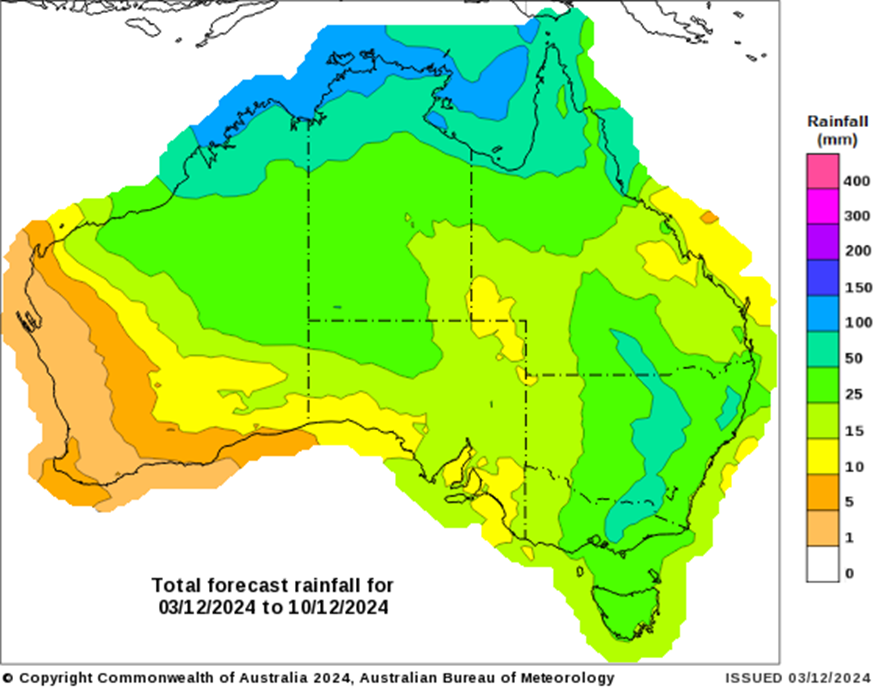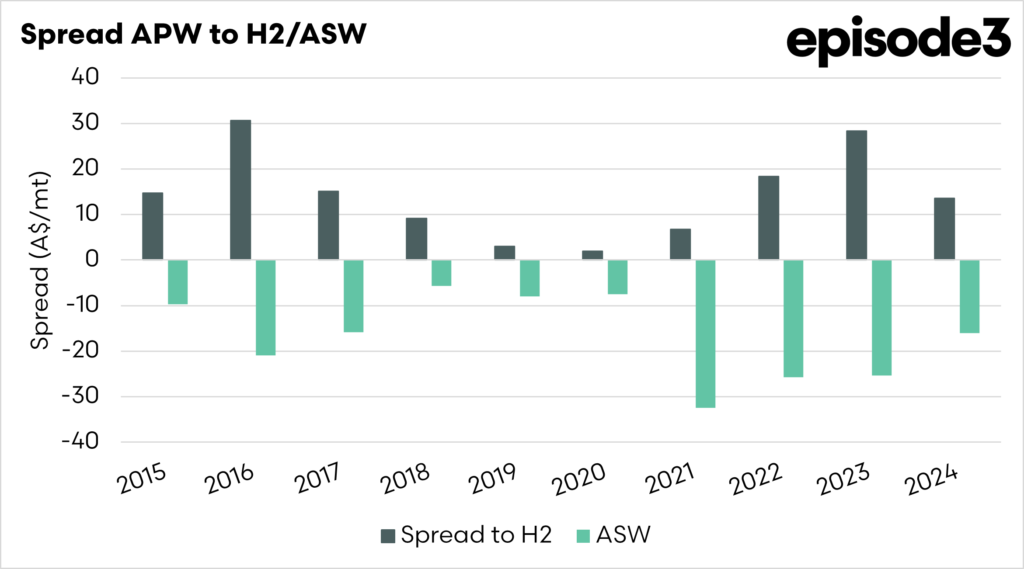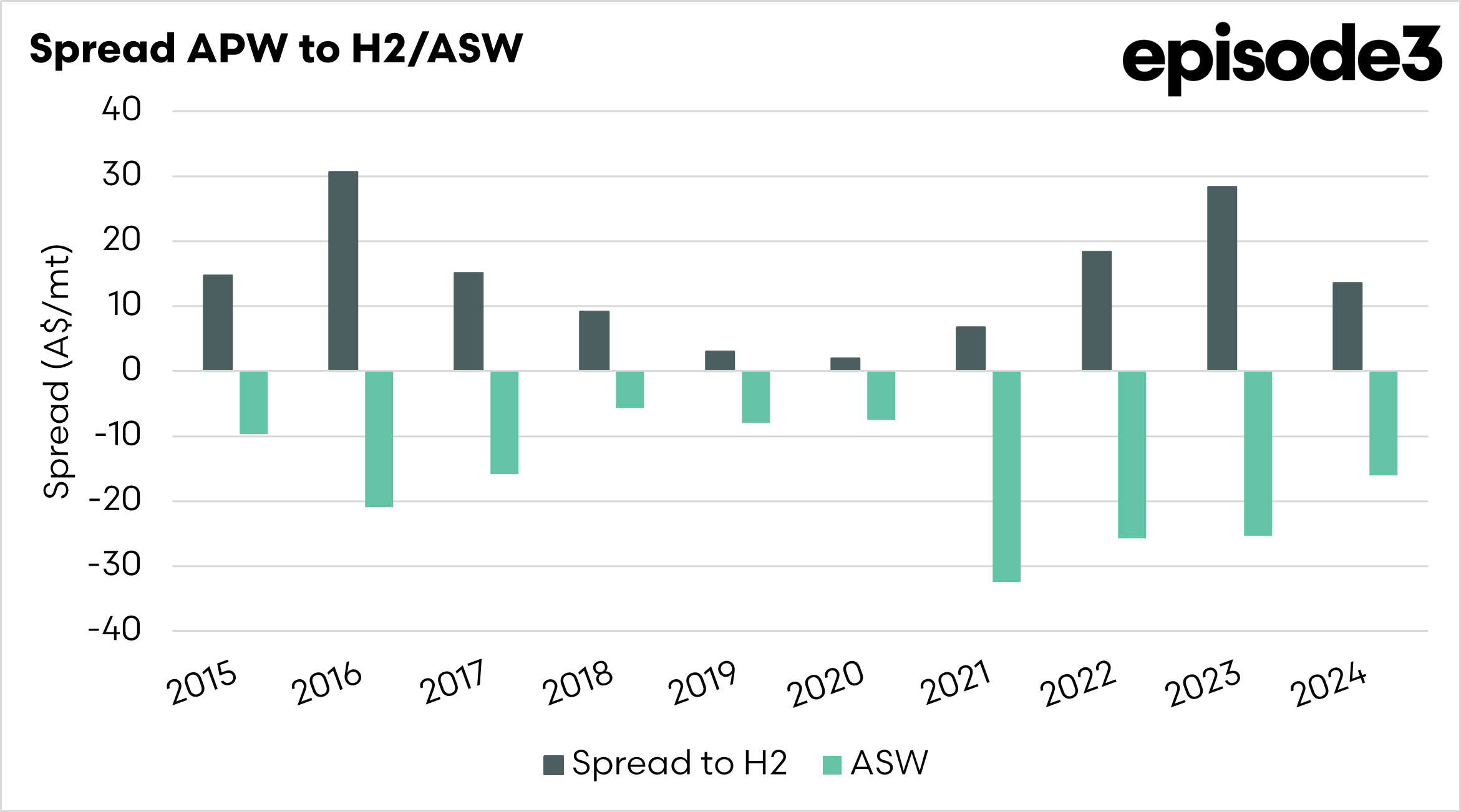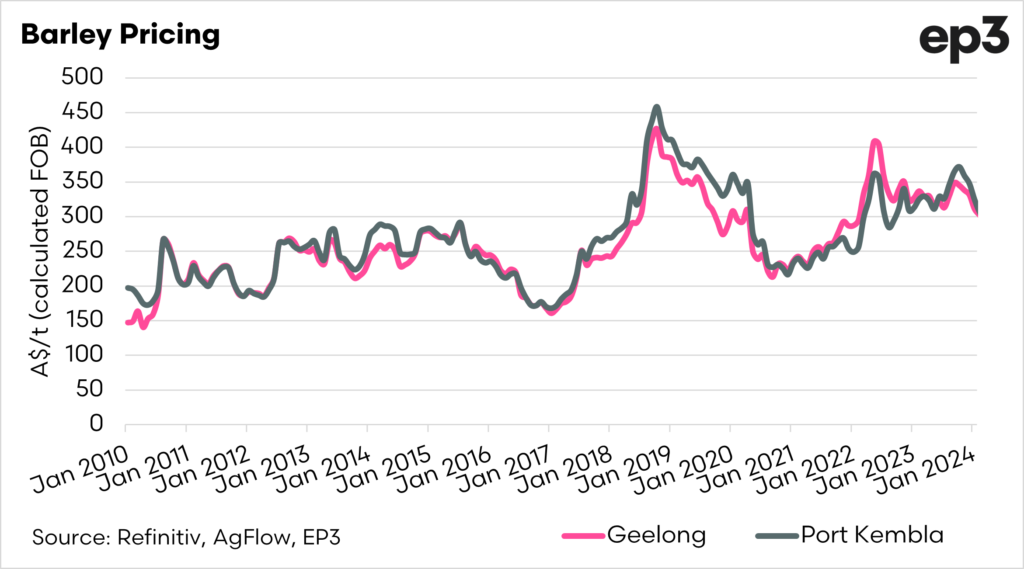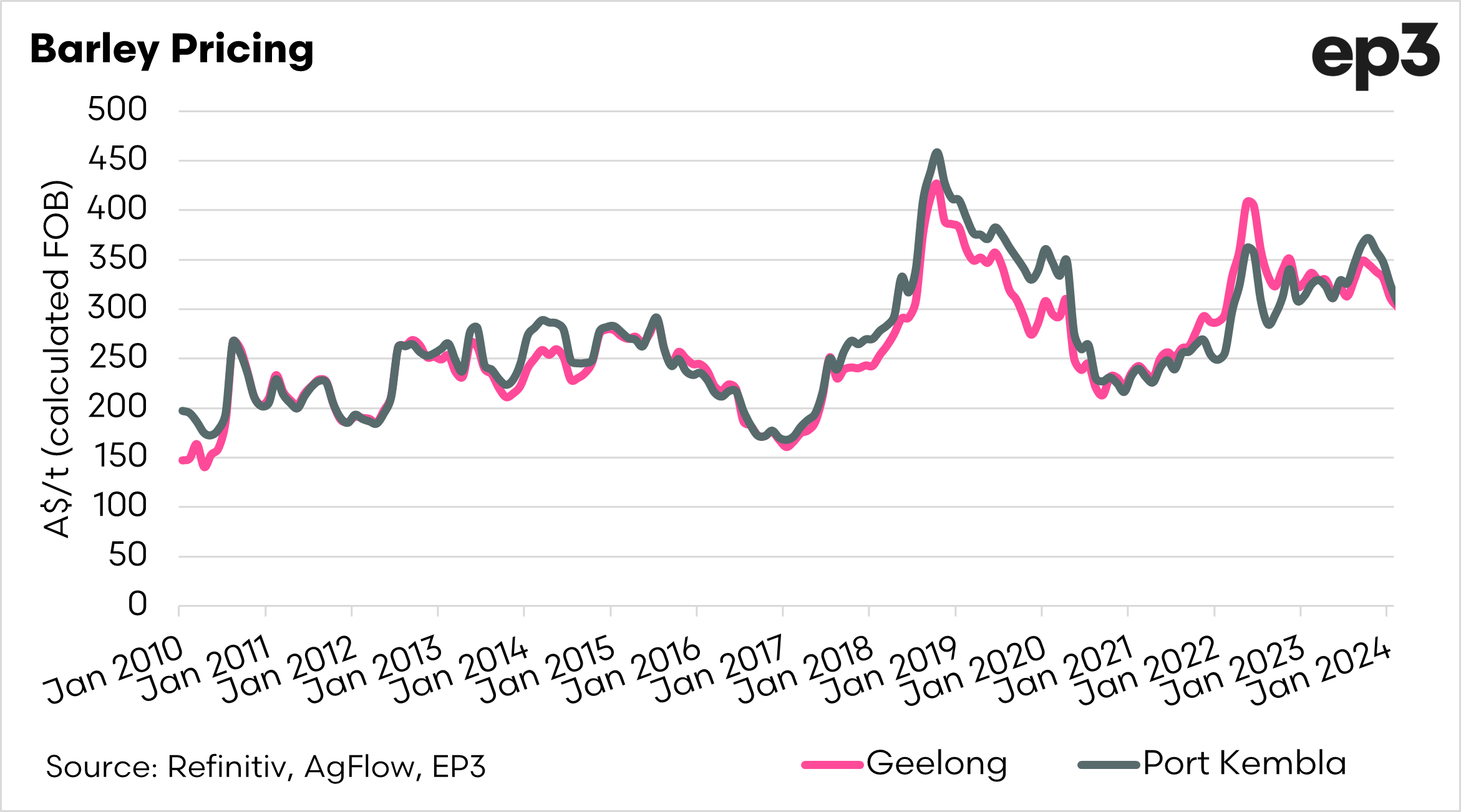Market Morsel: Why does it always rain on wheat?

Market Morsel
It looks like we are having a wet harvest in several regions, which isn’t good news. The impact is that we are likely to have more downgraded wheat.
Australia is the lucky country, apart from when it’s not. This rain (see map below) would have been most welcome a few months ago, but alas, we ain’t lucky.
Rainfall during wheat harvesting can severely impact grain quality. Prolonged exposure to moisture often leads to sprouting in the head, where kernels begin to germinate while still on the plant, significantly reducing their value for milling and baking. Additionally, wet conditions can lower the test weight of the grain, cause discolouration, and encourage the growth of mould and fungi.
I ain’t an agronomist, but it’s not good. What I care about is the market impact, that’s what really matters.
It is pretty simple, really, it is all about supply and demand. If there is a wet harvest, we are going to see a higher proportion of the crop going to feed grades, if there is less supply of higher quality, then that will go up, and feed grades will drop in value.
The chart below shows the spread from APW1 to H2 and ASW over the past decade. It shows a bit of a story. In years when it is dry (2018-2020), and supply is limited, then the premium or discount from APW1 tends to be minimal. During those periods, wheat is wheat.
In the wetter years, such as 2016 or the past couple of years, we have seen premiums for higher grades rise, and the discounts to lower grades increase.
At present, we are seeing the spread to lower grades increase, but still not to the levels seen in previous wetter years, likewise with the protein premium to H2. We could see these rise higher if the wet weather continues.
In addition, we are also seeing feed barley prices decline; this is due to it competing into the same market as wheat now. Nutritionally, wheat is stronger than barley, and it will have to be discounted further to continue making it into the ration.
If we look at the crop overall in recent years, the quality profile has been deteriorating. More and more of our wheat is being traded for feed purposes, the reality is that won’t struggle as much to find a market for all this feed like we may have done twenty years ago.

